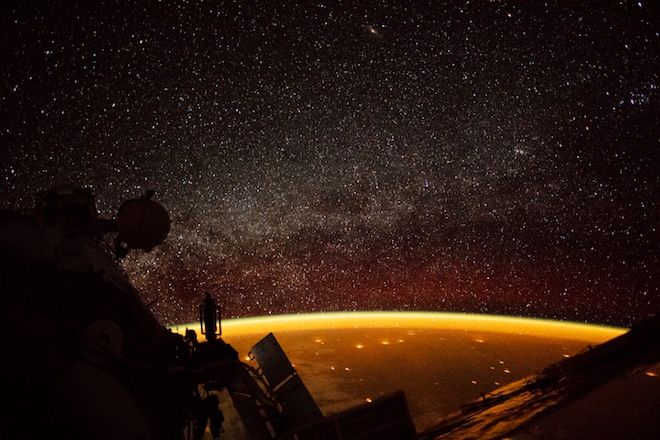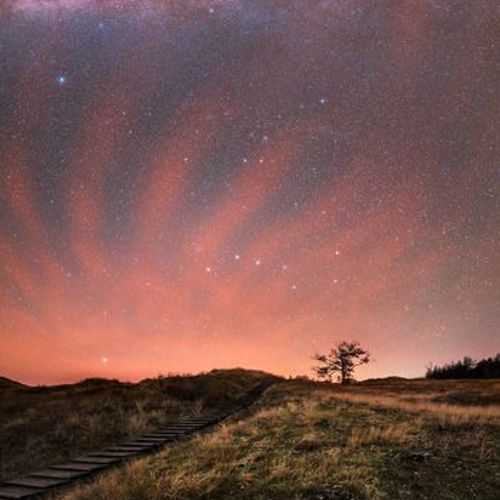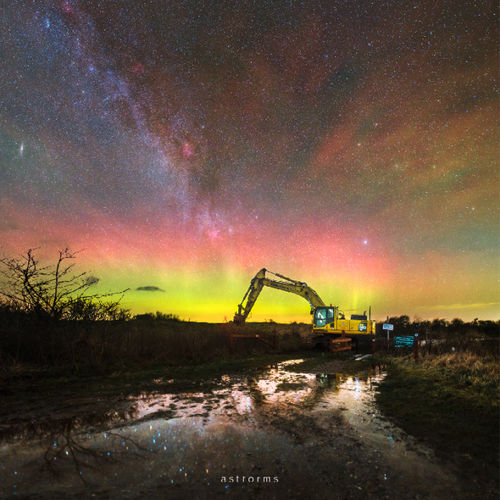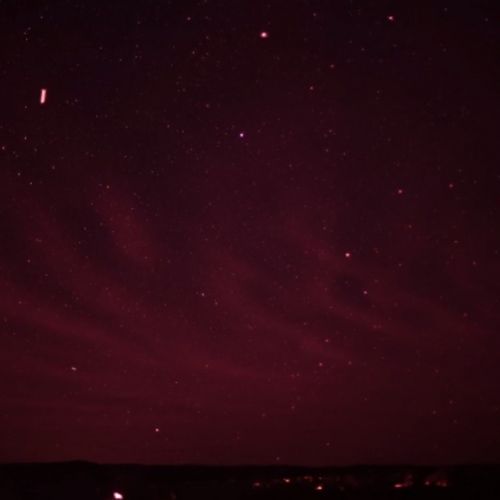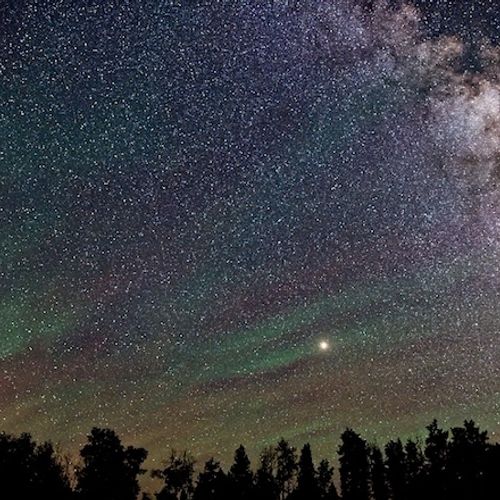
| Added | Tue, 30/10/2018 |
| Источники | |
| Дата публикации | Mon, 29/10/2018
|
| Версии |
With the coming of night previously hidden sources of light begin to illuminate the space. The lights of the city lit on the surface of the Earth. The constant glow of the atmosphere hovers in the upper layers. Beyond Earth star light fills the darkness of space.
From space, we can obtain unique types of these night lights. 7 Oct astronaut on Board the ISS took this picture while in orbit 400 kilometers above Australia. In this perspective, the stars seem more numerous along the center of the image where the plane of our disc-shaped milky Way galaxy stretches into space.
Orange (pictured), and green (in the video below) shades, enveloping the Earth is airglow. This phenomenon occurs when molecules (mostly nitrogen and oxygen) "fueled" by ultraviolet radiation from the Sun. To release this energy, the atoms in the lower atmosphere collide with each other and lose energy in the collision. But the upper atmosphere is thinner, so the atoms in it rarely collide. Instead, they release their energy by emitting photons. In the end, there is the glow of the atmosphere.
Sometimes, however, the glow may be caused by collisions. This form of luminescence is called chemiluminescence or night glow. Bright green light in the first few seconds of the video is the result of the connection of the oxygen atoms in oxygen molecules.
Other reactions result in red, blue, ultraviolet, and infrared light. The video below was compiled from photos taken by the astronaut during 26 minutes, 7 Oct. The ISS flew over Bangladesh, Australia, and then over New Zealand. Note the lightning, which also illuminate the atmosphere.
The glow of the atmosphere lifts the veil of secrecy over the processes that occur in the upper layers of our atmosphere. It can help scientists learn more about the movement of particles near the boundary of space, including the connection between space and terrestrial weather.
According to astrophysics from space flight Center NASA Goddard Sarah Jones, the glow of the atmosphere — is a great tool for scientists, revealing information about the conditions in the upper atmosphere, including the temperature, the form and content of different types of gases. Satellites is one way of studying this area. Sputnik NASA's Ionospheric Connection Explorer (ICON), which is scheduled to launch in late 2018, will help scientists follow physical processes where the atmosphere of the Earth interacts with near-earth space.
Translated by «Yandex.Translator»
© NASA
Translated by «Yandex.Translator»
Новости со схожими версиями
Log in or register to post comments
